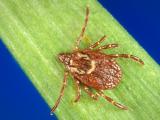A wildlife biologist who injured herself last fall while performing a necropsy—an autopsy on an animal—on a harbor seal contracted tularemia, a highly infectious disease caused by Francisella tularensis, which is deemed a high-priority bioterrorism agent in part because so few bacteria are required for infection.
Her story appeared yesterday in Morbidity and Mortality Weekly Report, which also details the first detection of the disease in a marine mammal.
Tularemia, or "rabbit fever," is an occupational risk for farmers, foresters, and veterinarians and is listed by the US Centers for Disease Control and Prevention (CDC) as one of six category A biological warfare agents. It occurs most often in rabbits, hares, and rodents. About 200 US cases are recorded each year, according to CDC data.
Cut on hand appeared at first to heal
The 32-year-old biologist, from Kitsap County, Washington, performed the necropsy on October 3, 2023, according to the report, which was written by local, state, and CDC scientists. She wore personal protective equipment—including a surgical gown, laboratory goggles, an N-95 respirator, and surgical gloves—during the necropsy, but accidentally cut her left hand through the glove with a scalpel.
Although the wound initially appeared to heal, it became inflamed and painful 2 weeks after the cut. The biologist, who worked for a nonprofit organization, also experienced fever, cough, congestion, and swollen lymph nodes about the same time.
By October 20, the hand had become painful and swollen, and she sought care from a primary care provider. The provider prescribed doxycycline and topical mupirocin, and the patient fully recovered.
Although the provider did not suspect tularemia, material from the wound was collected and submitted to a local clinical laboratory, where it was cultured and identified as suspected Francisella species. On November 3, 2023, the Washington State Public Health Laboratory received the isolate, where it tested positive for F tularensis by bacterial culture, direct fluorescent antibody, and polymerase chain reaction (PCR).
First known tularemia in marine mammal
In addition, six specimens from the dead seal tested positive by PCR, and three of them were forwarded to the CDC, which confirmed F tularensis type B. "This finding is the first known detection of F. tularensis in a marine mammal," the authors note.
Although another wildlife volunteer was present at the necropsy, no other human cases were identified.
This finding is the first known detection of F. tularensis in a marine mammal.
The authors conclude, "Although most tularemia cases acquired in the northwestern United States are associated with environmental exposure or contact with rodents or lagomorphs [rabbits and their relatives], marine mammals should be considered as a potential source of infection."














